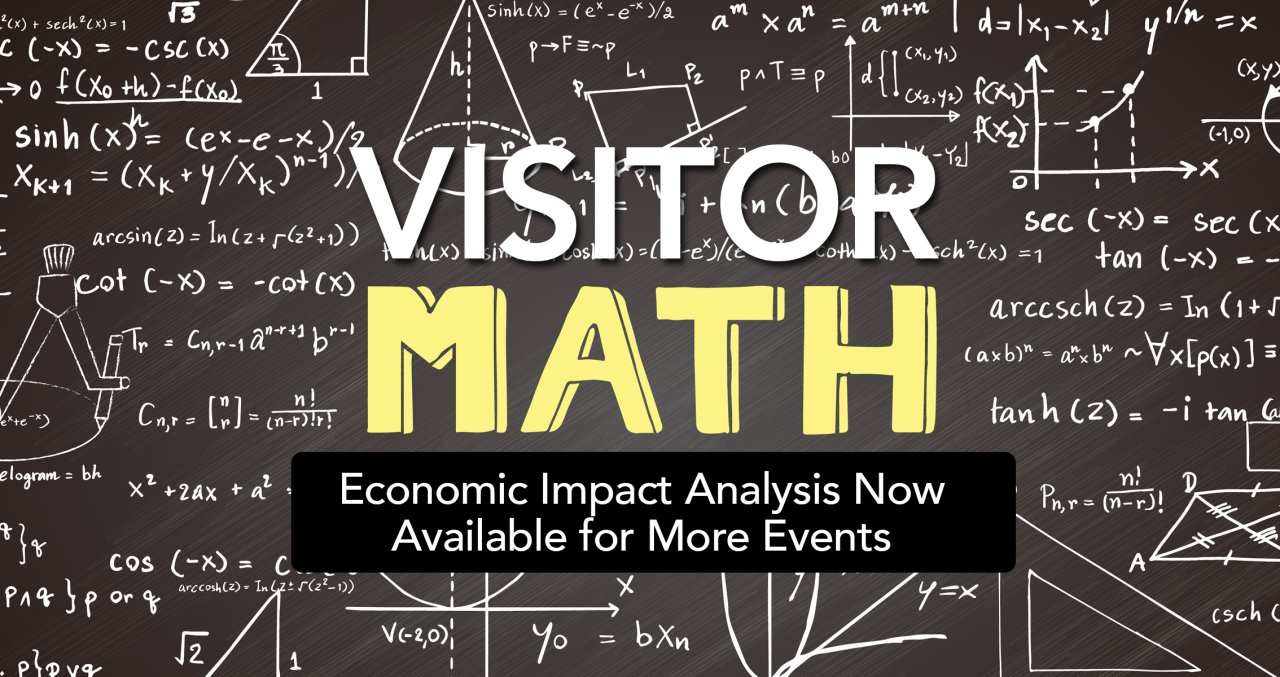Economic Impact Analysis Now Available for More Events
Monday, December 02, 2019, 6am by Jonathan Freeze, CDME, EDP

Last year I wrote about the philosophy behind developing festival/event tourism in our area and plugging data into a cycle of improvement that leads to more positive impacts from these events. This week I want to be more specific about how GRCVB can help area festival/event organizers who are interested in growing their events through tourism promotion.
It still starts with data and analyzing the parameters of the event’s last iteration here. Specifically, these are answers that we’ll need to get started:
- Total attendance;
- Breakdown of where attendees are from (county residents versus visitors);
- Average ticket price (if the event wasn’t free to attend);
- Any knowledge of hotel usage by visiting attendees.
Without any further calculations, this allows us to have an initial conversation about how visitor-welcoming the festival/event currently is and look at possible additions to the event plan that could make it more appealing to non-residents. Additionally, these base-level data allow GRCVB’s economic impact analyst to prepare a calculation of the event’s likely tourism economic impacts (using the industry-standard Event Impact Calculator or EIC available to every CVB through Destinations International).
(As one of the initial implementation steps of Wake County’s Destination Strategic Plan and knowing that events of all kinds countywide would need to be analyzed to grow event tourism, the Bureau budgeted and recruited for this analyst role in year one of our 10-year implementation.)
If area cultural event organizers would like deeper calculations performed, the EIC also can be programmed with inputs (given in confidence) of space rental costs, the organizer’s wholesale spending on food & beverage, AV costs, Internet costs, security costs and any other tracked local spending. Depending on the hotels or venues used, it’s also possible that the Bureau has supplemental data to share with the organizer from such sources as Arrivalist or STR.
What important findings come from an event’s economic impact estimate? A Cadillac example of the findings could include:
- Estimated new dollars that circulated through the county-level economy due to the event’s visitation;
- Number of hotel rooms likely booked here;
- Local tax revenues generated (occupancy, food & beverage and sales);
- Number of hospitality jobs that were partly supported by the event being held;
- Overnight visitors’ average length of stay;
- Origins of visitors by state;
- Other points of interest that visiting attendees saw while in the area.
All of this can be used to improve next year’s event plan, inform stakeholders such as elected officials, answer questions from sponsors and recruit new event sponsors.
By collaborating with CVB staff, organizers and their support teams can pursue better-targeted growth in attendance (i.e., attendance from visitors), leading to increased success and financial impact for the future. Last but not least, analyzing impact data in comparison with an event matrix and jumping into the cycle of improvement can open doors to new public funding, through GRCVB’s Signature Event Development Pilot Program. More to come on that in January…

Author: Jonathan Freeze, CDME, EDP
Jonathan Freeze, CDME, EDP, has built a career in the marketing of places, leading the Greater Raleigh CVB's marketing efforts since 2008. Though a firm believer in the science of marketing, Jonathan also began his career as a writer and creative wordsmith. In 2021 he contributed an award-winning chapter to the book Tourism Microentrepreneurship (Emerald Publishing), and recently he earned the Entrepreneurship Development Professional (EDP) credential. Learn more